Physical Address
304 North Cardinal St.
Dorchester Center, MA 02124
Physical Address
304 North Cardinal St.
Dorchester Center, MA 02124
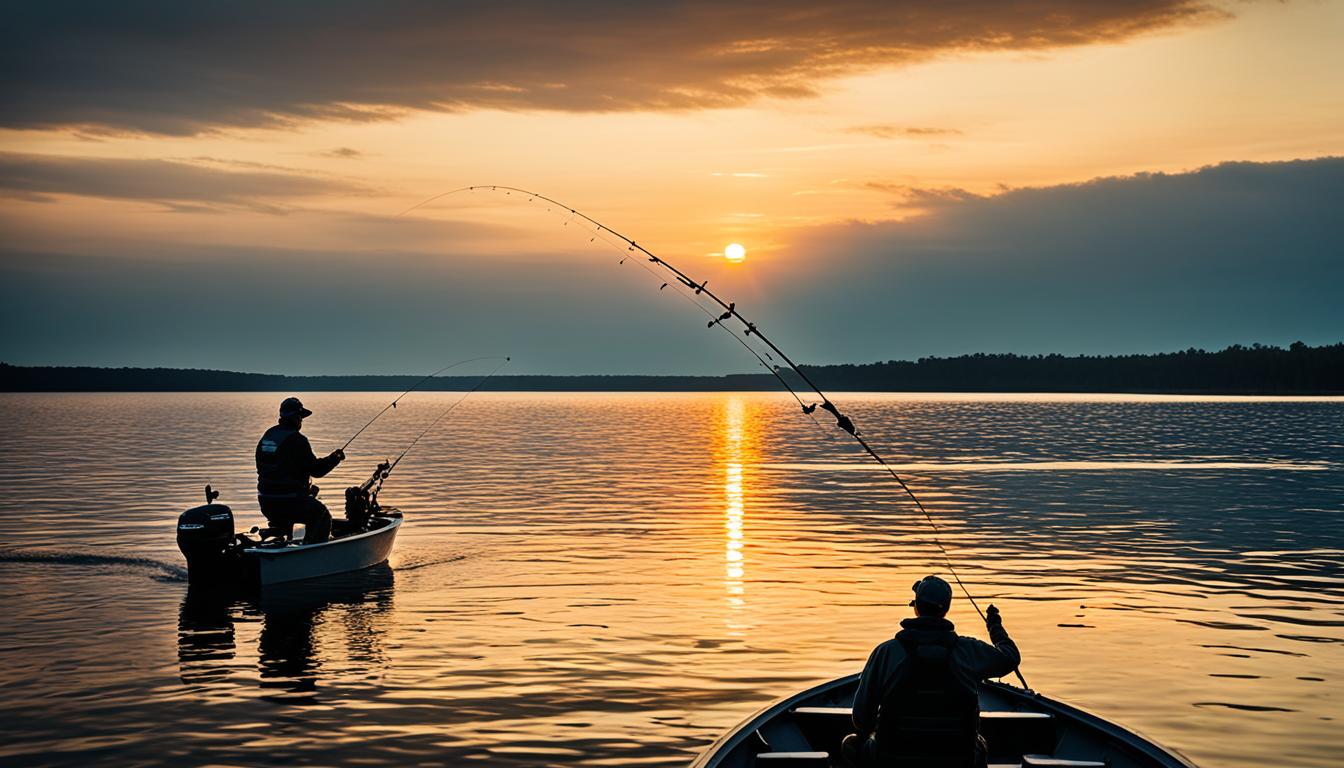
If you love bass fishing, you’re always looking to get better and catch more fish. This guide will cover the top 10 bass fishing techniques you need to know. You’ll learn how to use plastics and tackle the thrill of topwater fishing. These tips will boost your bass fishing skills.
To become a pro at bass fishing, you need to know how bass live and hunt. Learn about what moves them and what they eat. This knowledge helps you catch them better.

Bass react to their surroundings a lot. Things like water temperature, time of day, and the seasons affect them. Knowing these things helps you catch bass better. For example, bass are most active early in the morning and late in the afternoon. They hide in deep, cool water during the hottest part of the day.
Choosing the right fishing gear is key. This includes rods, reels, lines, and lures. Each piece of gear has its own strengths. Pick the right combo for the conditions and techniques you’re using.
The type of line and lure you use also matters a lot. Try different ones to see what works best in your area.
“The key to mastering bass fishing is to understand the fish’s behavior and match your gear to the situation. With the right approach, you can unlock the secrets of these incredible gamefish.”
TAKE A LOOK AT YOUR NEW FISHING ROD
In the world of bass fishing, finesse tactics with soft plastic lures are key. They work well in clear waters or when fish are hard to catch. These lures are light and subtle, perfect for tricking even the pickiest bass.
The plastic worm is a top choice for finesse fishing. It comes in many shapes, sizes, and colors. You can rig it in different ways for various fishing situations. The Texas rig and Carolina rig are popular ways to use it.
There are more soft plastic options for finesse fishing too. Creature baits like craws and frogs work great with a gentle approach. Slim, finesse-style swimbaits also mimic real fish and can get bass to bite.
| Finesse Plastic Lure | Ideal Presentation | Key Situations |
|---|---|---|
| Plastic Worm | Texas Rig, Carolina Rig | Clear water, pressured fish |
| Creature Bait | Slow, subtle hopping/twitching | Heavily-fished waters, finicky bass |
| Finesse Swimbait | Slow, steady retrieve | Suspended bass, clear lakes |
Success with finesse plastics depends on your presentation. Use a light touch and make subtle movements to attract bass. With patience and practice, plastic worm fishing can be very exciting.
Crankbaits are a top choice for bass fishing fans. They cover a lot of water and get bass to strike hard. We’ll look at picking the right crankbait and techniques to improve your fishing.
Choosing the right crankbait is key for bass fishing success. Think about the water depth, how clear it is, and if there’s cover or structure. Deep-diving crankbaits work best in deep water, while shallow ones are better for shallower areas.
The bait’s color and action also matter. They should match the conditions you’re fishing in. Trying different baits and colors can help you find what works best.
CRANK BAITS YOU WANT CRANK BAIT? =LQQK HERE
How you retrieve your fishing lures, like crankbaits, affects your catch. Slow, steady retrieves are good for clear, calm waters. Faster, more unpredictable movements work better in murky or choppy waters.
Trying different retrieval speeds and patterns can help you find what works best. This way, you can catch more bass.
Learning about crankbaits and how to retrieve them can make you a better bass fishing angler. Always put safety and ethical fishing tackle use first when fishing.
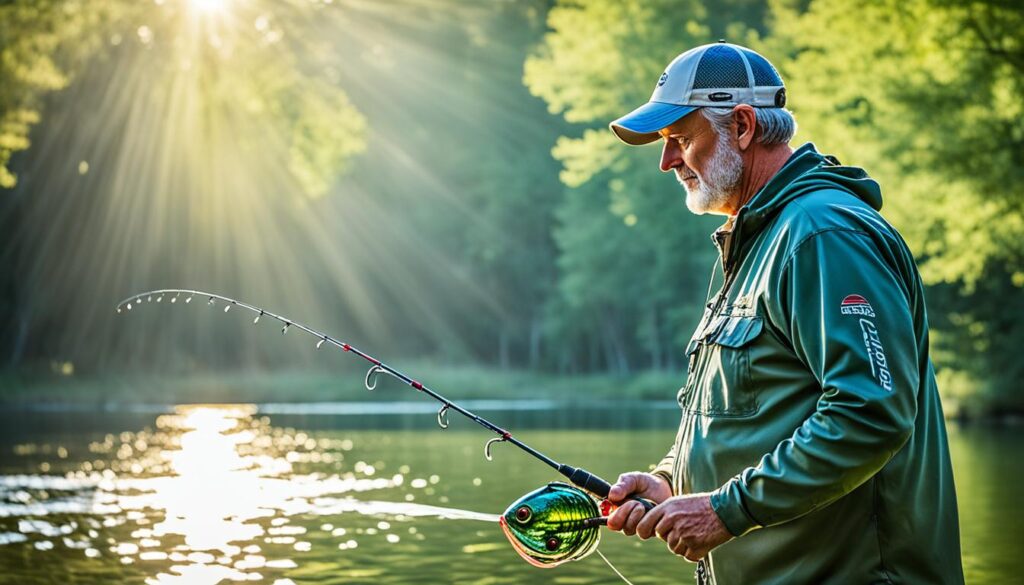
Anglers love the thrill of topwater bass fishing. It’s all about using lures that sit on the surface. These lures tempt bass to jump out of the water and strike hard. Let’s dive into the world of topwater lures and learn the walk-the-dog technique.
There are many topwater lures out there, each with its own way to attract bass. You can use popping bugs that make big splashes or walking baits that move like real baitfish. Hollow-bodied frogs are great for fishing in shallow, green areas.
The walk-the-dog technique is a top choice for topwater fishing. It means moving your lure side to side to look like real baitfish. It takes practice, but with time, you’ll get the hang of it. This technique makes bass strike with a lot of force, making fishing exciting.
Topwater fishing is exciting for both new and experienced anglers. By trying different lures and practicing the walk-the-dog, you can catch big bass. It’s a great way to make your fishing trips unforgettable.
Spinnerbaits are a key lure for bass fishing. They are essential for any angler’s gear. To use them well, you need to know the different parts of the lure and how they work in different situations.
The blade of a spinnerbait is what makes it flash and vibrate, drawing in bass. You can pick from many types of blades to fit the conditions and your style. The skirt adds more flash and movement. It’s made of soft strands. The trailer, often a soft plastic like a grub, looks real and attracts bass even more.
| Spinnerbait Component | Purpose | Key Considerations |
|---|---|---|
| Blade | Creates flashing, vibrating action to attract bass | Blade style, size, material |
| Skirt | Provides additional flash and movement | Color, length, and material of skirt strands |
| Trailer | Adds natural, life-like appearance and appeal | Type of soft plastic bait, color, and size |
Knowing how to choose and use fishing lures is key to getting the most out of spinnerbaits. They work well in many fishing situations, from thick cover to open water. Spinnerbaits can be a big help in your fishing tackle collection.
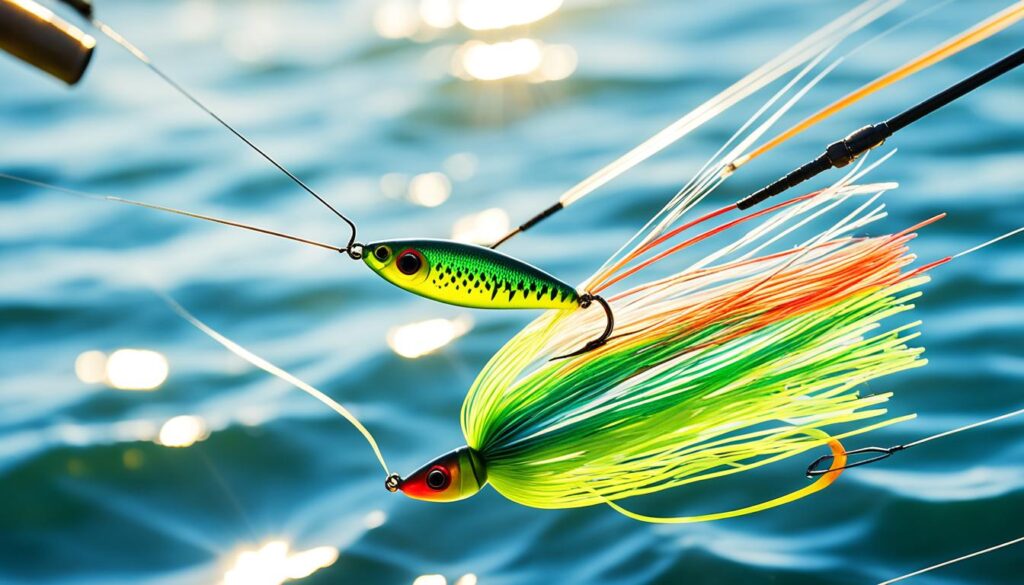
“Spinnerbaits are a versatile and effective lure that should be in every bass angler’s tackle box. With the right combination of blade, skirt, and trailer, you can dial in the perfect presentation to catch more fish.”
Flipping and pitching are top techniques for bass fishing. They help anglers reach bass hiding in thick cover like plants, trees, and docks. Learning these methods can greatly improve your fishing skills.
Success in flipping and pitching comes from the right gear and how you present it. Choose a strong rod, a reel that holds a lot, and a durable line. A smooth cast is key to getting a bass to bite.
Picking the right bait is crucial. Soft plastics like creature baits and jigs work well in thick cover. Think about the water and what bass like in your area to pick the best bait.
Practice flipping and pitching often and try different lures and ways to present them. With the right gear, casting, and bait, you’ll have a powerful tool for bass fishing.
“Flipping and pitching are like a secret weapon for targeting bass in the thickest cover. Once you get the hang of it, it’s a game-changer.”
Whether you’re experienced or new to bass fishing, learning flipping and pitching can change the game. Adding these techniques to your fishing will help you catch more big fish and have more success on the water.
Jigs are a key lure in bass fishing. They come with weighted hooks and various skirts that work well in many fishing spots. We’ll look at the different types of jigs and how to use them best.
There are many jig styles for bass fishing, each with its own benefits. Some top choices include:
Choosing the right jig style is key to success. Each jig has special features for different fishing conditions. Trying out different jigs can help you find the best one for your fishing spot.
| Jig Style | Ideal Applications | Recommended Trailer |
|---|---|---|
| Swim Jig | Open water, submerged vegetation | Soft plastic creature bait |
| Football Jig | Rocky/woody cover, deep water | Pork frog or craw trailer |
| Pitching Jig | Docks, laydowns, vertical cover | Soft plastic trailer or twin-tail grub |
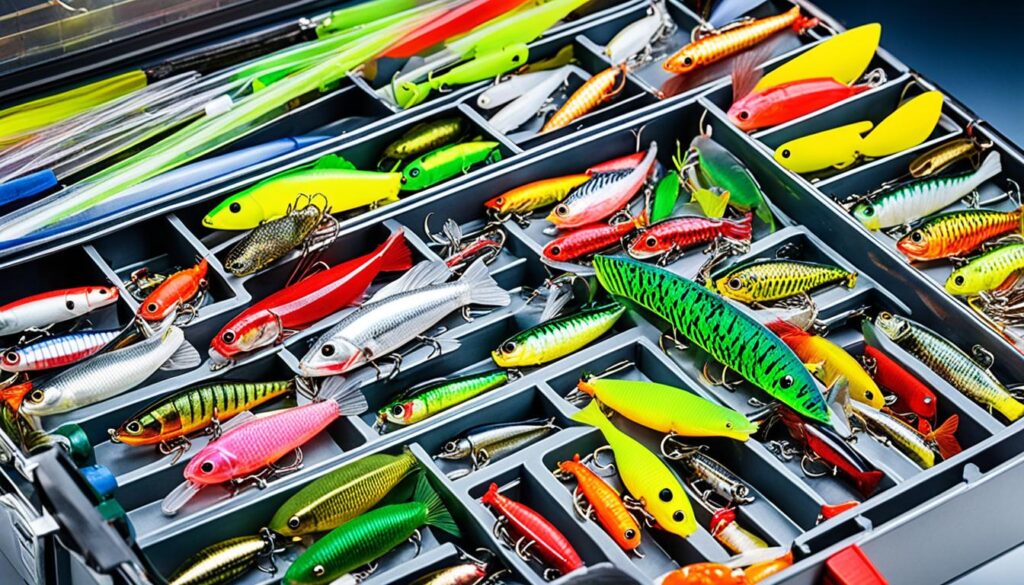
Frog fishing is thrilling and effective for catching bass in thick vegetation. These lures look like real frogs and attract bass in deep water.
Fishing lures come in many shapes, sizes, and colors for different fishing spots and preferences. Hollow-bodied frogs and realistic soft plastic ones each have their own benefits.
It’s key to rig and present frog lures right for success. Choose the right weight, hook size, and line type for natural movement. Learning to work the lure on the surface or through plants can lure in bass.
When frog fishing, think about water depth, plant thickness, and bass behavior. Adjust your lure and retrieval to match the conditions for better strikes.
“Frog fishing is like a high-stakes game of cat and mouse. You have to be patient, precise, and ready to pounce when the opportunity arises.” – Legendary bass angler, John Smith
Whether you’re experienced or new to bass fishing, learning frog fishing can add excitement and success. With the right fishing lures and approach, you can become a frog fishing pro and improve your bass fishing skills.
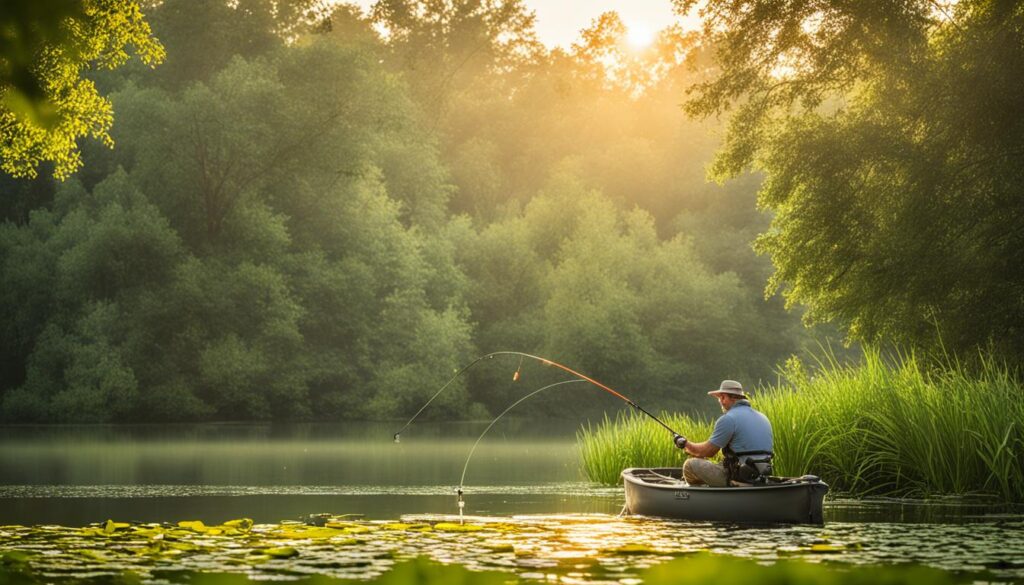
Many anglers prefer artificial lures, but live bait is great for catching big bass. We’ll look at the benefits of using minnows, crayfish, and nightcrawlers. We’ll also talk about how to rig and present them to attract big bass.
Getting your live fishing bait rigged and presented right is key for bass. Here are some tips to improve your live fishing bait use:
Mastering how to rig and present live fishing bait will help you catch trophy-sized bass. This makes for a fun and rewarding bass fishing experience.
| Live Bait | Advantages | Disadvantages |
|---|---|---|
| Minnows | Attract large bass, natural presentation | Fragile, difficult to keep alive |
| Crayfish | Mimic natural prey, durable | Harder to find and keep alive |
| Nightcrawlers | Readily available, effective for bass | May not be as enticing as other live baits |
Live fishing bait can change the game in bass fishing. Knowing how to rig and present it right will help you catch more trophy-sized bass. This makes for an unforgettable bass fishing adventure.
In this guide, we’ve covered the top 10 bass fishing techniques every angler should know. We’ve talked about finesse fishing with plastics and the excitement of topwater and jig fishing. We shared expert tips and tricks to help you catch more bass on your next fishing trip.
These techniques are great for both beginners and pros. They will improve your bass fishing skills and take your angling to the next level. By learning about bass behavior, choosing the right gear, and using specialized retrieval methods, you’ll become more confident and successful.
Success in bass fishing comes from adapting to changing conditions and learning new techniques. So, try these strategies out, experiment with different lures, and show off your skills as a bass fishing enthusiast.